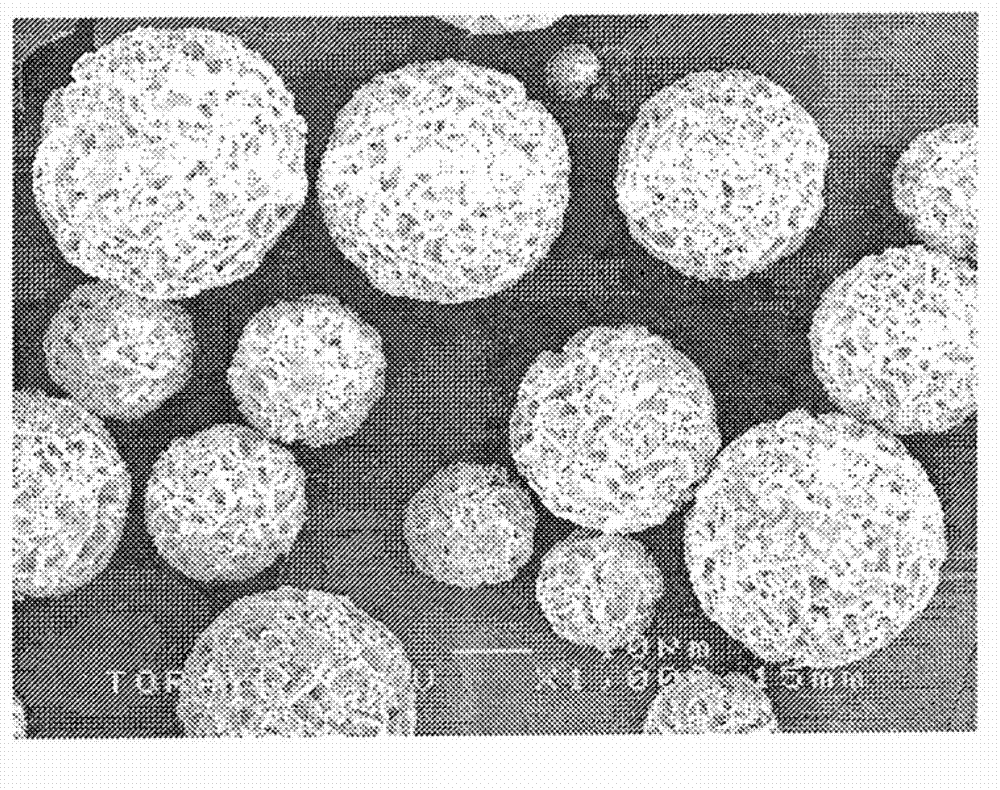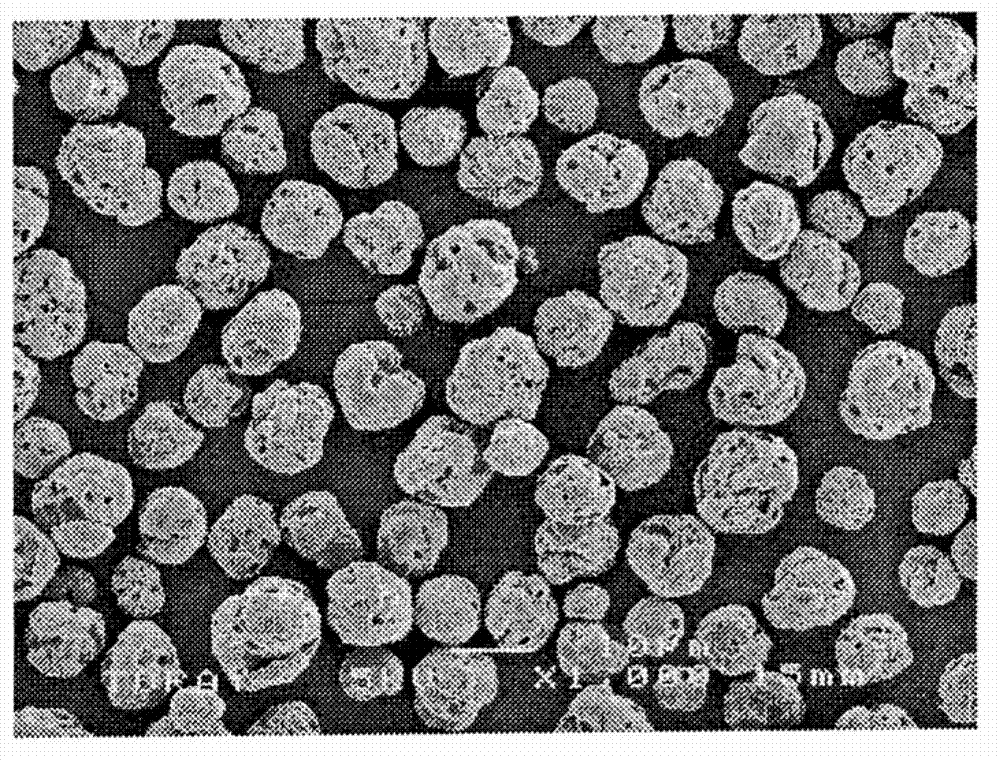Method for producing microparticles of polylactic acid-based resin, microparticles of polylactic acid-based resin and cosmetic using same
A technology of polylactic acid-based resin particles, applied in cosmetics, cosmetics, cosmetic preparations, etc., can solve the problems of unclear manufacturing methods of polylactic acid-based resin particles
- Summary
- Abstract
- Description
- Claims
- Application Information
AI Technical Summary
Problems solved by technology
Method used
Image
Examples
Embodiment
[0156] The present invention will be specifically described below based on examples, but the present invention is not limited by them.
[0157] (1) Determination of melting enthalpy and crystallization temperature
[0158] Using a differential scanning calorimeter (Robot DSC RDC220 manufactured by Seiko Instruments Co., Ltd.), the temperature was raised to 200°C at a rate of 20°C / min in a nitrogen atmosphere, and the temperature was measured from the area of the peak showing the heat of fusion near 160°C. to calculate.
[0159] In addition, the crystallization temperature was measured using the above-mentioned device, after raising the temperature to 200°C under the same conditions, and then measuring it at a cooling rate of 1°C / min. melting temperature.
[0160] (2) Weight average molecular weight
[0161] (i) Molecular weight measurement of polylactic acid resin (A)
[0162] The weight average molecular weight is a molecular weight calculated by comparing with a calibr...
manufacture example 1
[0193] Production Example 1 Production method of polylactic acid 1
[0194] Add 70.2 g of L-lactide (manufactured by Aldrich: optical purity 98% ee or higher), 30.1 g of D-lactide (manufactured by Aldrich: optical purity 98% ee or higher) and 1.1 g of octanol into a stirring device In a reaction container, it was uniformly dissolved in a nitrogen atmosphere at 150° C., and then 0.90 g of tin octoate (manufactured by Aldrich) was added to a toluene solution adjusted to a concentration of 10% by mass in dry toluene, and a polymerization reaction was carried out for 6 hours. After completion of the polymerization reaction, the reactant was dissolved in chloroform, and reprecipitated while stirring in methanol, and the monomer and catalyst were removed to obtain a solid content. The obtained solid content was filtered, heated and vacuum-dried at 80° C. to obtain a polylactic acid-based resin having a copolymerization ratio of L / D=70 / 30, an enthalpy of fusion of 0 J / g, and a Mw (PM...
manufacture example 2
[0195] Production Example 2 Production method of polylactic acid 2
[0196] In addition to using 49.9 g of L-lactide (manufactured by Aldrich: optical purity of 98% ee or higher), 49.8 g of D-lactide (manufactured by Aldrich: optical purity of 98% ee or higher), 0.95 g of octanol, and tin octoate (Manufactured by Aldrich) except 0.95 g, under the same conditions as in Production Example 1, a polylactic acid-based resin having a copolymerization ratio of L / D=50 / 50, an enthalpy of fusion of 0 J / g, and a Mw (PMMA conversion) of 9800 was obtained. . The SP value of this polymkeric substance is 23.14 (J / cm2) by above-mentioned calculation method 3 ) 1 / 2 .
PUM
| Property | Measurement | Unit |
|---|---|---|
| boiling point | aaaaa | aaaaa |
| particle size | aaaaa | aaaaa |
| oil absorption | aaaaa | aaaaa |
Abstract
Description
Claims
Application Information
 Login to View More
Login to View More - R&D
- Intellectual Property
- Life Sciences
- Materials
- Tech Scout
- Unparalleled Data Quality
- Higher Quality Content
- 60% Fewer Hallucinations
Browse by: Latest US Patents, China's latest patents, Technical Efficacy Thesaurus, Application Domain, Technology Topic, Popular Technical Reports.
© 2025 PatSnap. All rights reserved.Legal|Privacy policy|Modern Slavery Act Transparency Statement|Sitemap|About US| Contact US: help@patsnap.com



